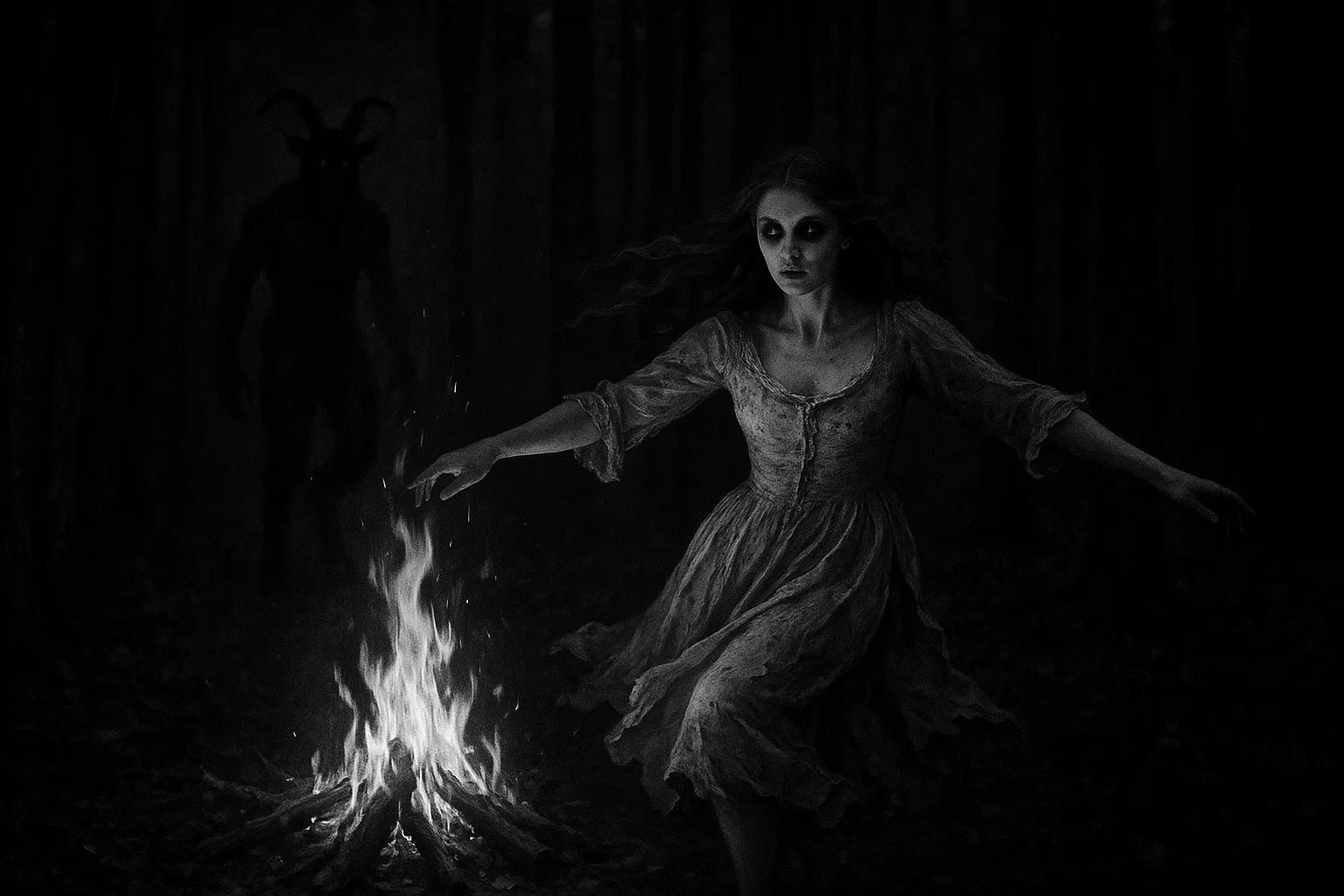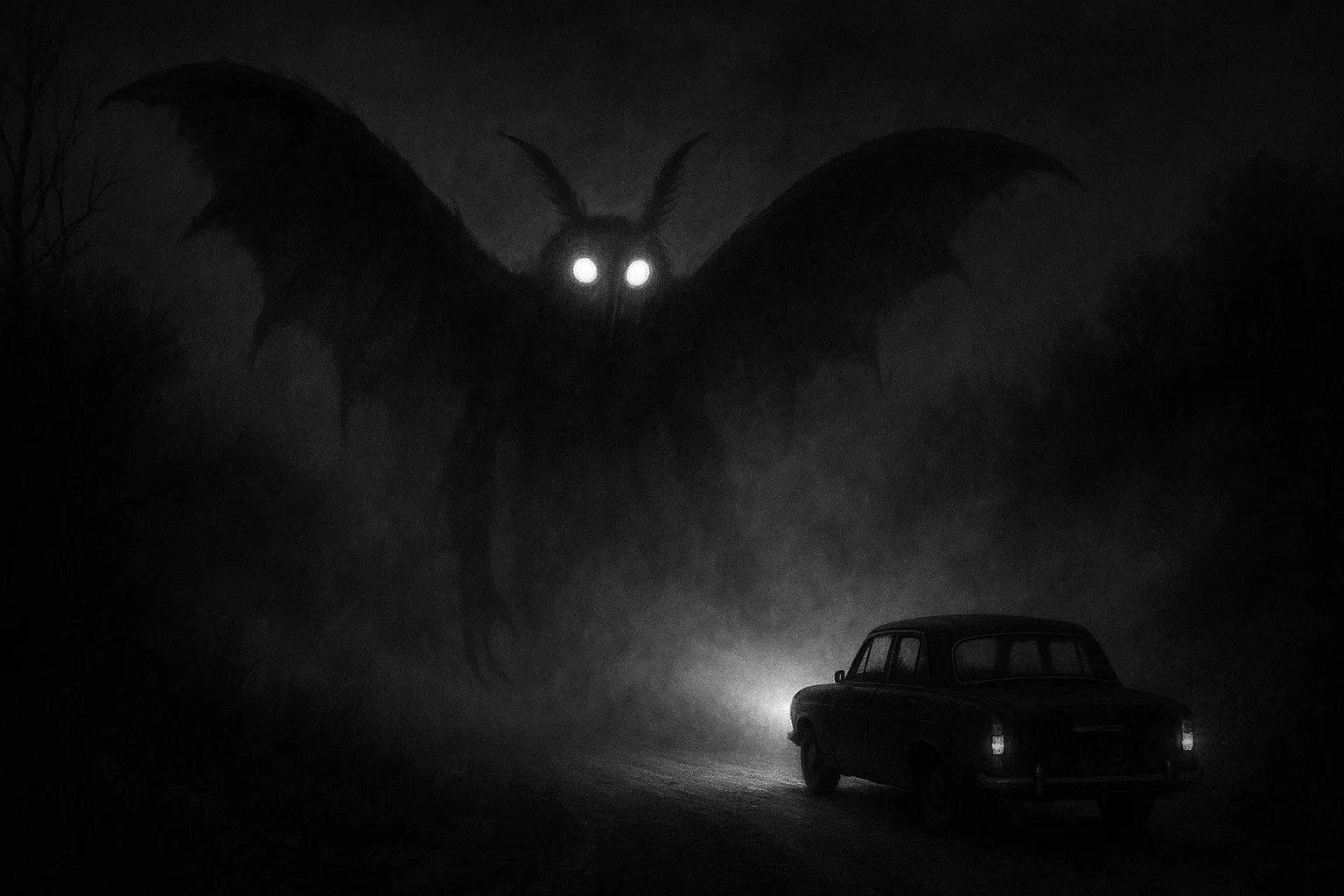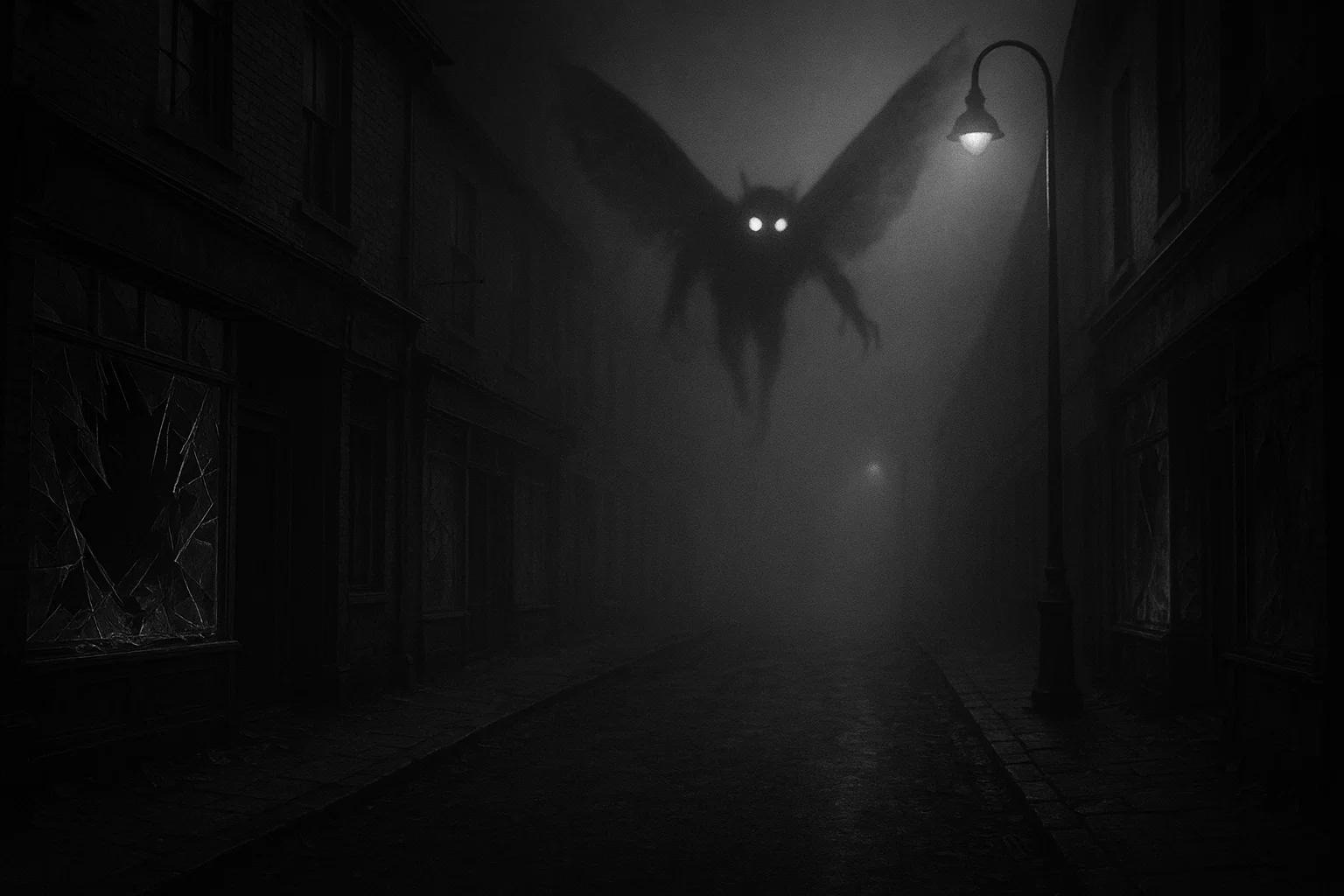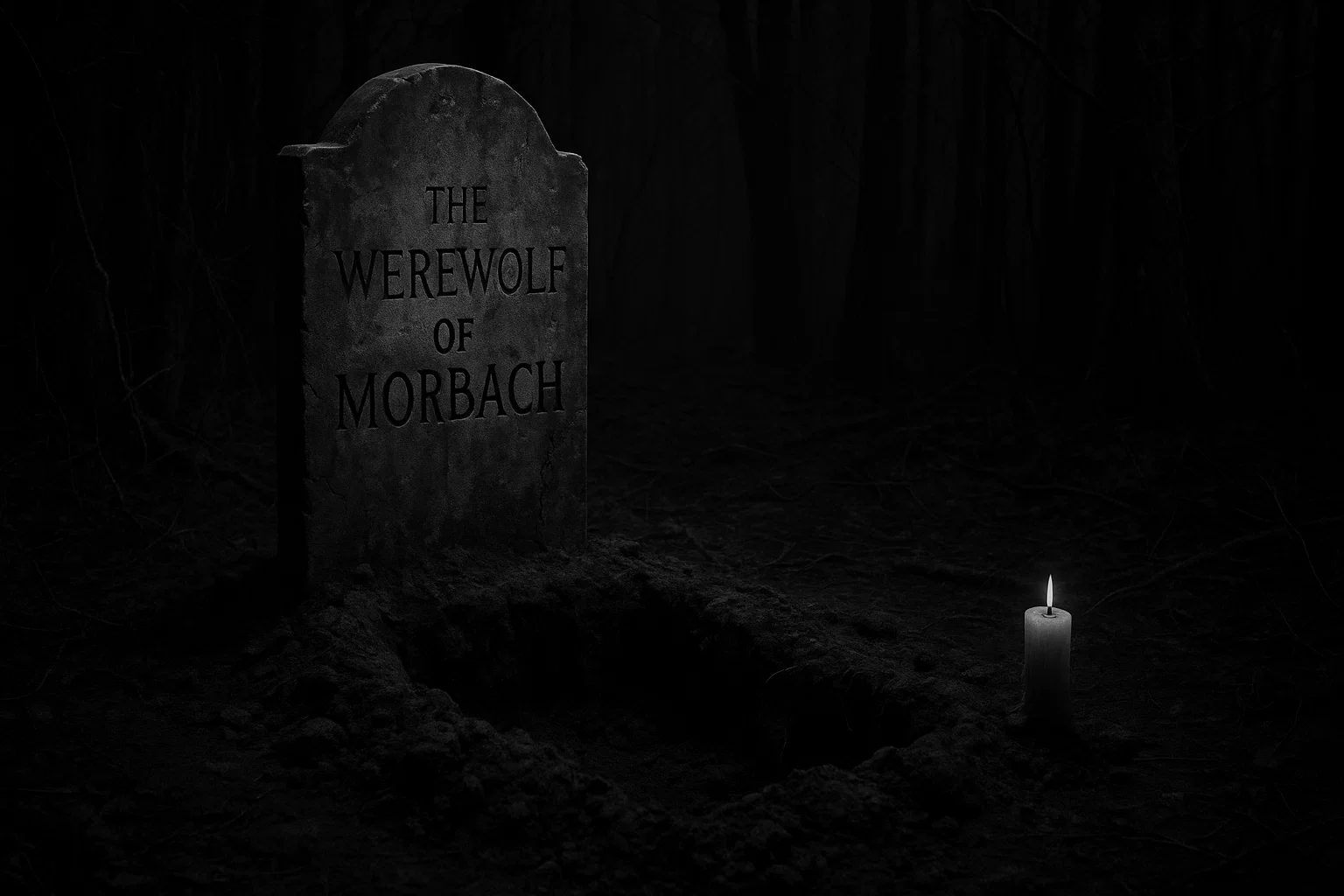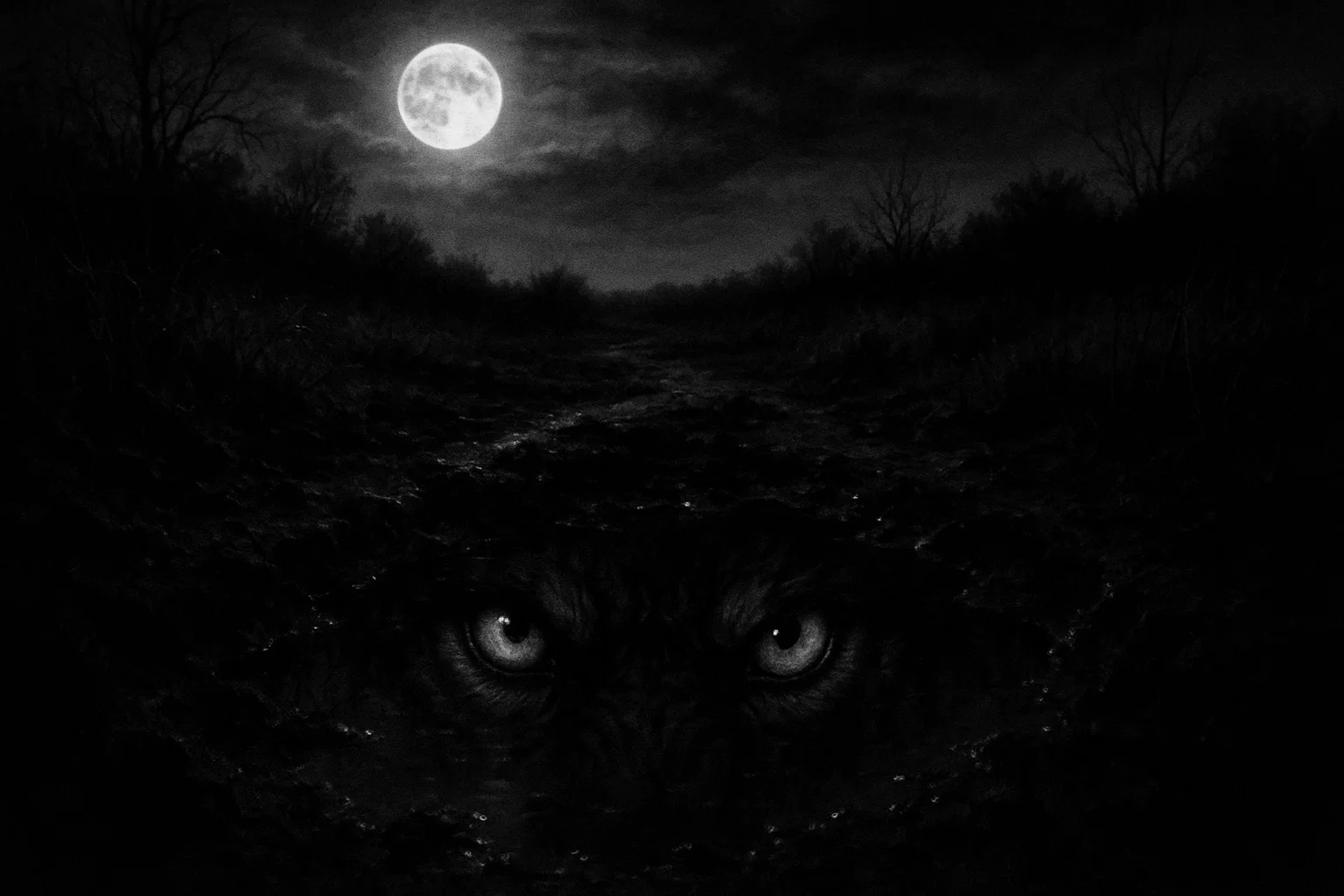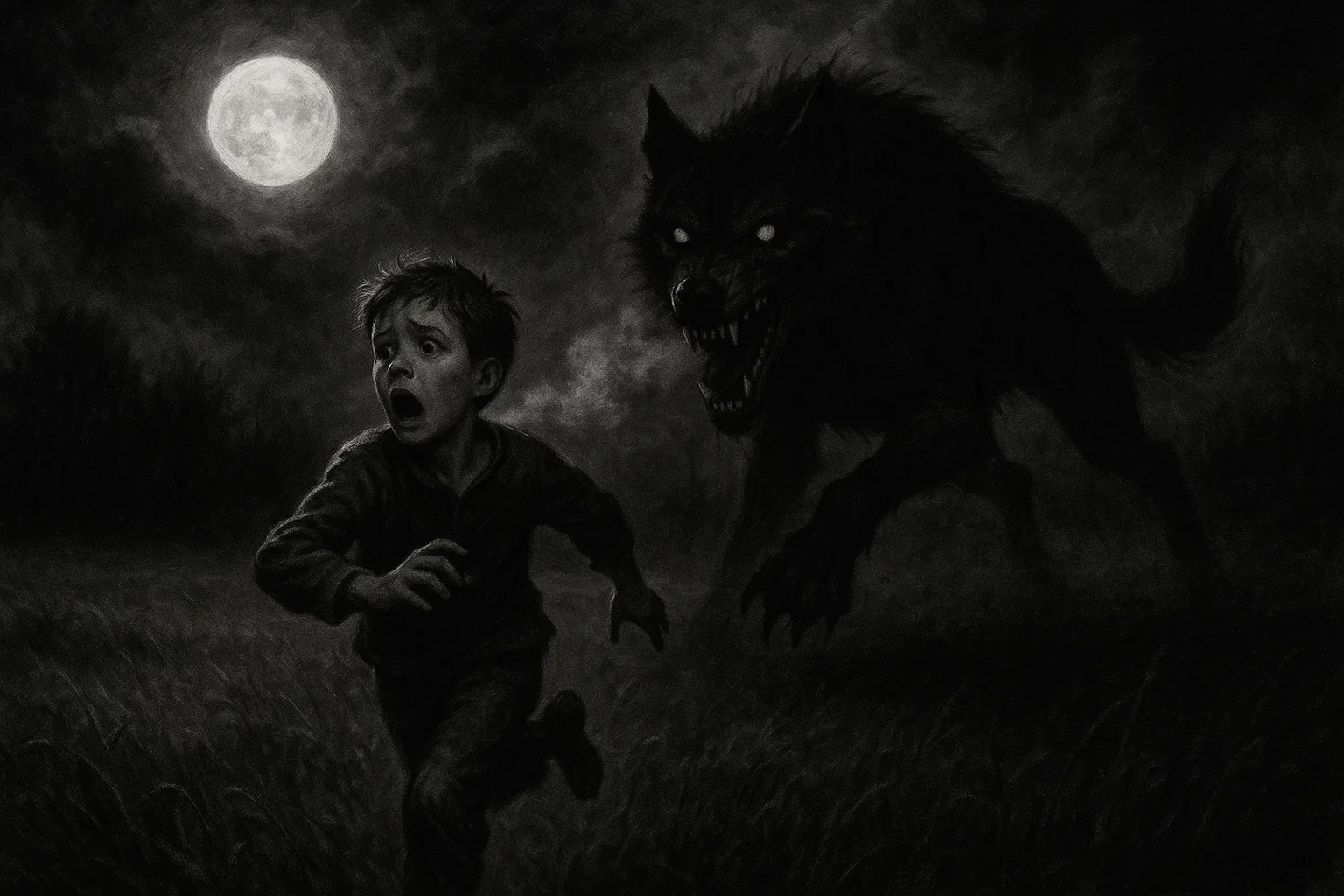In the shadowed forests of late 16th-century Burgundy, a young woman named Claudia Gaillard became the center of a chilling tale that gripped the region with terror.
Accused of transforming into a loup-garou—a werewolf—and consorting with demonic forces, Claudia faced a brutal trial under the zealous witch-hunter Henry Boguet.
Her story, marked by a haunting encounter, tortured confessions, and a fiery execution, reflects the era’s deep-seated fear of the supernatural.
Table of Contents
Overview
| Aspect | Details |
|---|---|
| Name | Claudia Gaillard |
| Age | Likely late teens to early 20s (born circa 1575–1580) |
| Location | Burgundy, France (near Dole or Besançon) |
| Year | 1598–1600 |
| Accusations | Lycanthropy, witchcraft, murder, demonic pacts |
| Key Incident | Encounter with Jeanne Perrin in 1598, where a tailless wolf with human-like features appeared after Claudia hid behind a bush |
| Victims | No confirmed human victims; up to 15 livestock (goats, sheep) reported dead in 1598 |
| Evidence | Jeanne Perrin’s testimony, reports of livestock attacks, Claudia’s tortured confession; no physical evidence like salves found |
| Investigator | Henry Boguet, witch-hunter and judge |
| Trial Date | January 15–16, 1599 (likely in Dole) |
| Outcome | Burned at the stake on February 1, 1599 |
| Historical Source | Henry Boguet’s Discours des Sorciers (1602) |
Who Was Claudia Gaillard?
Claudia Gaillard was a young woman, likely in her late teens or early 20s, living in a rural village in Burgundy during the late 1590s. Born around 1575–1580, she hailed from a peasant background, possibly orphaned or estranged from her family, as no relatives are mentioned in historical accounts.
Claudia eked out a living through menial tasks—gathering firewood, foraging herbs, or working as a servant for local households. Her small, dilapidated hut on the outskirts of her village, near Dole or Besançon, was a solitary refuge, reinforcing her status as an outsider.
Described as gaunt, with sallow skin, matted dark hair, and piercing eyes, Claudia’s appearance fueled rumors of her otherworldly nature. She was known for wandering the forests alone, muttering to herself or collecting plants, behaviors that villagers like Marguerite Laurent interpreted as signs of witchcraft.
Her eccentricities—such as avoiding church services and staring intently at passersby—made her a figure of suspicion in a region already rife with tales of loup-garous. Claudia’s isolation and peculiar habits, combined with her poverty, set the stage for the accusations that would engulf her life.
You May Also Like: Inokashira Park Curse: The Mysterious Park That Breaks Couples
Claudia Gaillard’s Story
The tale of Claudia Gaillard is a haunting blend of folklore, fear, and tragedy, set in the superstitious heart of Burgundy during a time when werewolf hysteria swept through France.
Her story begins with a chilling encounter in the woods, escalates through a wave of accusations, and culminates in a trial that sealed her fate as one of the era’s most enigmatic loup-garous.
Early Life and Background
Claudia Gaillard’s early life is shrouded in obscurity, as few records survive from her village. Likely born in a hamlet near Dole, a hub of Burgundian witch trials, she grew up in the shadow of poverty and hardship.
Her parents, if alive, were probably peasants who toiled in the fields or forests, leaving Claudia to fend for herself from a young age. By her teens, she lived alone, surviving through foraging, odd jobs, or charity from villagers like Jeanne Perrin.
Her knowledge of herbs, used for healing or cooking, earned her a reputation as a cunning woman, a double-edged title that could mark her as both healer and witch.
Claudia’s solitary nature set her apart. Neighbors noted her reluctance to join communal activities, such as market days or church gatherings, and her habit of wandering the forests at dusk.
Guillaume Bisset, a local farmer, recalled seeing her muttering near a stream, her words sounding like “strange chants.” Her appearance—thin, with hollow cheeks and unkempt hair—may have been due to malnutrition, but villagers saw it as evidence of a cursed soul.
By 1597, rumors swirled that Claudia practiced sorcery, with some claiming she could summon spirits or transform into animals. These whispers, rooted in Burgundy’s rich loup-garou folklore, primed the community for the events of 1598.
The Crimes and Accusations
The catalyst for Claudia’s downfall was a terrifying incident in the spring of 1598.
Jeanne Perrin, a middle-aged villager collecting alms for the poor, was walking through a forest near Dole with Claudia. As they trudged along a narrow path, Claudia grumbled about her own lack of charity, her voice tinged with bitterness.
Suddenly, she darted behind a thicket, her movements swift and silent. Moments later, a tailless wolf emerged, its paws eerily human-like, with toes instead of claws.
Its eyes, described as “piercing and unnatural,” locked onto Perrin, who dropped her alms basket and fled in panic. When Perrin later confronted Claudia, who reappeared calmly on the path, Claudia remarked, “The wolf would not have harmed you, had you stayed.”
This cryptic statement, coupled with the wolf’s strange features, convinced Perrin that Claudia was a loup-garou.
The accusations against Claudia were grave, reflecting the era’s blend of superstition and fear:
- Lycanthropy: Transforming into a tailless wolf using a demonic salve, granted by a pact with Satan.
- Witchcraft: Attending witches’ sabbaths, casting spells, and consorting with demons.
- Murder: Attacking livestock and possibly humans, though no specific human victims were confirmed.
- Demonic Pacts: Selling her soul to the devil for supernatural powers.
No direct evidence linked Claudia to human murders, but the era’s judicial system relied heavily on witness accounts and confessions.
Villagers reported several incidents that fueled the accusations:
- March 1598, near Dole: Pierre Martin, a farmer, found two goats with their throats torn, their bodies partially eaten. He claimed to have seen a tailless wolf with “human eyes” fleeing into the woods.
- June 1598, Besançon outskirts: Marie Collet, a shepherdess, reported a tailless wolf circling her flock at dusk. She raised her staff, and the creature fled, leaving behind tracks with human-like toes.
- August 1598, near Salins: A 7-year-old girl, Lucie Garnier, vanished while playing near a forest. Villagers like Claude Dupont later blamed Claudia, though no remains were found.
- October 1598, village near Poligny: Jean Fournier, a shepherd, lost three sheep to a wolf attack. He described a figure resembling Claudia lurking nearby, though he couldn’t confirm her identity.
Livestock losses were significant, with up to 15 animals reported dead in 1598 across Burgundy’s villages. These attacks, combined with Perrin’s testimony, solidified Claudia’s reputation as a werewolf.
The absence of confirmed human victims—unlike cases like Gilles Garnier—made the murder charges speculative, but the era’s fear of loup-garous meant that suspicion alone was damning.
You May Also Like: Murmur, Duke of Hell: The Demon Who Commands the Dead
Discovery and Investigation
The investigation began when Jeanne Perrin shared her story with villagers, including Marguerite Laurent and Guillaume Bisset.
Perrin’s account, describing the wolf’s human-like features, resonated with local folklore that depicted werewolves as tailless to distinguish them from natural wolves.
By late spring 1598, rumors reached Jean de Vaux, the local magistrate, who initially hesitated but contacted Henry Boguet, a judge notorious for his witch-hunting zeal. Boguet, fresh from prosecuting the Gandillon Family, saw Claudia’s case as another battle against Satan’s minions.
Boguet’s investigation was methodical but biased. He interviewed Perrin, Martin, Collet, and other witnesses, focusing on the tailless wolf’s description.
A search of Claudia’s hut yielded no incriminating evidence—no salves, charms, or occult items—but her absence during the search heightened suspicions. The community descended into panic, with parents like François Dubois barring children from forests and farmers arming themselves with pitchforks and muskets.
Father Étienne Bouchard, the village priest, delivered fiery sermons, warning of demonic infestation and urging repentance. Armed patrols, led by Captain Philippe Renaud, scoured the woods, finding strange tracks but no wolves, further stoking fear.
The hunt for Claudia intensified as villagers reported sightings of her near attack sites. Marie Collet claimed to have seen her muttering near a sheepfold days before an attack, while Claude Dupont swore he spotted her silhouette under a full moon.
These accounts, though circumstantial, convinced Boguet of her guilt, and her arrest was ordered in the autumn of 1598.
Claudia Gaillard’s Werewolf Trial
Claudia Gaillard’s trial was a harrowing ordeal, emblematic of the era’s ruthless witch hunts. Held between late 1598 and early 1600, likely in Dole’s courthouse, it was presided over by Henry Boguet, whose Discours des Sorciers (1602) provides a vivid, if prejudiced, account.
The trial was marked by gruesome torture, coerced confessions, and a community desperate to purge its fears.
Capture
On November 10, 1598, Claudia was apprehended by a militia led by Captain Philippe Renaud. Found hiding in a forest near Dole, she was dragged to the village, her wrists bound with rope.
The crowd, gathered along the path, hurled insults, calling her “witch” and “beast.” Some threw stones, but Renaud ensured her safe transfer to a stone cell in Dole’s jail.
Claudia’s demeanor—calm and unblinking—unnerved her captors, who reported her staring silently at the walls, as if communing with unseen forces. Her cell, damp and cold, was guarded by men who feared her alleged powers, whispering that her eyes glowed in the dark.
Interrogation
Interrogations began the next day, November 11, 1598, under Boguet’s supervision. Torture was immediate and severe, employing the rack, thumbscrews, and hot irons.
Claudia initially denied the charges, claiming she was merely foraging when Perrin saw the wolf. But as the rack stretched her limbs and irons seared her flesh, she broke, confessing to a litany of crimes.
She admitted to receiving a salve from a “dark figure” in the forest, described as a tall man with a horned head, who promised her the power to become a wolf.
She claimed to have roamed the woods, attacking goats and sheep, and attended witches’ sabbaths where she danced naked with demons and drank blood from a chalice.
Boguet fixated on her lack of tears, writing, “No one ever saw her shed a single tear, whatever effort might be made, which is a certain sign of a witch.”
This observation, rooted in the era’s belief that witches could not cry, was seen as proof of her demonic nature. Claudia’s confessions grew increasingly fantastical, describing flights through the air and feasts with Satan. She named no specific human victims but admitted to livestock killings, aligning with reports from Pierre Martin and Jean Fournier.
The torture’s brutality—hours of stretching, burning, and crushing—likely shaped her admissions, as pain often produced narratives tailored to interrogators’ expectations.
Claudia’s physical condition deteriorated rapidly. Her gaunt frame became skeletal, her hair fell out in clumps, and her skin blistered from burns. Guards noted her muttering in her cell, words they interpreted as spells, though she may have been delirious from pain.
Boguet’s questions, laced with religious fervor, pressed her to reveal accomplices, but Claudia named none, insisting she acted alone.
You May Also Like: Is Mamlambo Real? Mythical Snake, Mermaid, or Real-Life Monster?
The Trial
The trial opened on January 15, 1599, in Dole’s main courthouse, a stone building packed with villagers.
Boguet, clad in judicial robes, presented a case built on Jeanne Perrin’s testimony, supported by accounts from Pierre Martin, Marie Collet, Claude Dupont, and Jean Fournier.
Perrin recounted the forest encounter, her voice trembling as she described the tailless wolf’s human-like toes. Martin and Fournier detailed livestock losses, while Collet’s story of the circling wolf added to the narrative.
No physical evidence—such as the alleged salve or wolf skins—was produced, but Claudia’s confession, read aloud, was deemed conclusive.
The prosecution argued Claudia was a loup-garou in league with Satan, her transformations a threat to Burgundy’s Christian soul.
Boguet cited her lack of tears and wolf-like behavior as proof, drawing on theological texts that linked witches to demonic pacts.
The defense, if any existed, was nominal; Claudia, weakened by torture, stood silently, her head bowed. Her appearance—emaciated, with haunted eyes—may have swayed some to pity, but the crowd’s fear overwhelmed any sympathy.
The judges deliberated for a day, swayed by Boguet’s authority and the community’s panic.
On January 16, 1599, Claudia was found guilty of lycanthropy, witchcraft, and murder, though the murder charge rested solely on livestock attacks and unconfirmed rumors about Lucie Garnier. The sentence was death by burning, a punishment reserved for heresy and sorcery.
Execution
On February 1, 1599, Claudia was led to a public square in Dole, near the cathedral of Saint-Jean. A pyre, stacked high with dry wood, straw, and pitch, stood ready.
Henri Dubois, the executioner, bound her to a wooden stake with iron chains, her thin frame barely filling the restraints. The crowd, numbering in the hundreds, included grieving farmers, fearful parents, and curious onlookers.
As Dubois lit the fire, Claudia remained silent, her lack of tears noted by Boguet, who stood nearby, clutching a cross. The flames roared, engulfing her within minutes, her body reduced to ashes by noon.
Some claimed to hear a faint howl as the fire peaked, though others dismissed it as the wind. The ashes were scattered in the Doubs River, a ritual to prevent her spirit from returning as a wolf.
The execution was a communal catharsis, but it left lingering unease. Father Étienne Bouchard held a mass to cleanse the town, urging repentance, while villagers whispered of other loup-garous still lurking in the woods.
You May Also Like: The Village of Starving Souls | Horror Story
Claudia Gaillard vs Other Werewolves
Claudia Gaillard’s case stands out for its focus on a female accused of lycanthropy, a rarity among werewolf trials. Below is a comparison with other historical cases:
| Case | Year | Location | Details | Outcome |
|---|---|---|---|---|
| Jean Grenier | 1603 | Gascony, France | Teen confessed to child murders as a wolf; spared due to youth and perceived insanity. | Confined to monastery |
| Gilles Garnier | 1573 | Dole, France | Hermit confessed to killing four children; used salve; executed. | Burned at the stake |
| Peter Stumpp | 1589 | Bedburg, Germany | Confessed to 16 murders; used magical belt; tortured brutally. | Beheaded, burned |
| Gandillon Family | 1598 | St. Claude, France | Family accused of lycanthropy; confessed to child murder; executed. | Burned at the stake |
| Werewolf of Châlons | 1598 | Châlons, France | Tailor accused of killing dozens; claimed lycanthropy; records destroyed. | Burned at the stake |
| Thiess of Kaltenbrun | 1692 | Livonia, Latvia | Claimed benevolent lycanthropy to fight witches; flogged, banished. | Banished |
| Hans the Werewolf | 1651 | Estonia | Confessed to involuntary lycanthropy; executed despite no murders. | Executed |
| Manuel Blanco Romasanta | 1852 | Galicia, Spain | Confessed to 13 murders; claimed lycanthropy; life imprisonment. | Imprisoned |
| Swiatek | 1849 | Połomia, Poland | Beggar confessed to cannibalism; committed suicide before trial. | Suicide |
| Werewolf of Pavia | 1541 | Pavia, Italy | Farmer confessed to murders as a wolf; died from mutilation. | Died |
| Henry Gardinn | 1605 | Spanish Netherlands | Accused of lycanthropy and witchcraft; executed. | Executed |
| Beast of Gévaudan | 1764–1767 | Gévaudan, France | Wolf-like creature killed over 100; no human accused. | Wolf killed |
Claudia’s case shares core elements with Gilles Garnier and Peter Stumpp, particularly the use of a salve for transformation and confessions extracted through torture.
Her female status aligns with Antoinette Gandillon from the Gandillon Family, but her solitary accusation contrasts with their familial scope.
Unlike Jean Grenier or Manuel Blanco Romasanta, who received leniency due to youth or psychological considerations, Claudia’s execution reflects the era’s harsh treatment of women accused of witchcraft.
The tailless wolf motif, unique to her case, is a hallmark of Burgundian folklore, distinguishing it from Thiess of Kaltenbrun’s benevolent claims or the mass panic of Beast of Gévaudan.
The absence of confirmed human victims sets her apart from Werewolf of Châlons or Gandillon Family, highlighting the speculative nature of her charges.
Was Claudia Gaillard a Real Werewolf?
The Claudia Gaillard case is primarily documented in Henry Boguet’s Discours des Sorciers (1602), a treatise on witchcraft and lycanthropy based on his prosecutions in Burgundy.
Secondary sources, such as Sabine Baring-Gould’s The Book of Were-Wolves (1865) and Montague Summers’ The Werewolf (1933), draw heavily on Boguet, often with added embellishments. The case’s authenticity is debated, with questions about the balance of fact and folklore.
Historical Sources
Boguet’s Discours des Sorciers is the primary source, detailing Claudia’s trial, her confession, and her lack of tears during torture.
He describes the forest encounter with Jeanne Perrin, the tailless wolf’s human-like features, and Claudia’s admission of attending witches’ sabbaths.
Boguet’s account, written as a legal and theological text, lends credibility due to his role as a judge, but his bias toward demonology skews the narrative.
Parish records from Dole, referenced in later histories, document livestock losses in 1598, supporting some accusations.
Jean Bodin’s De la Démonomanie des Sorciers (1580), while predating the case, provides context for Burgundian beliefs in werewolves, describing similar trials.
Sabine Baring-Gould recounts Claudia’s story with vivid detail, but his 19th-century perspective introduces dramatic flourishes, such as her “feral gaze.”
Montague Summers echoes Boguet, emphasizing Claudia’s stoicism, but lacks primary evidence beyond Discours des Sorciers.
Trial transcripts, if they existed, were likely destroyed during the French Revolution or earlier conflicts, leaving Boguet’s account as the main record.
Local chronicles from Burgundy, cited by historians, mention a surge in witch trials in 1598–1600, corroborating the era’s judicial climate but offering no specifics about Claudia.
You May Also Like: Types of Werewolves Ranked by Power and Origin
Accuracy and Debate
The case’s core elements—Claudia’s arrest, trial, and execution—are plausible, given Boguet’s documented prosecutions and the prevalence of witch hunts in Burgundy.
Jeanne Perrin’s testimony, describing the tailless wolf, aligns with local folklore and mirrors accounts in Gandillon Family and Gilles Garnier cases. Livestock losses, reported by Pierre Martin and Jean Fournier, were real, as parish records confirm animal deaths in 1598.
However, the lycanthropy claims are almost certainly fabricated. Confessions extracted under torture, as in Peter Stumpp and Gandillon Family, were often tailored to fit interrogators’ expectations, with Claudia’s tales of salves and sabbaths reflecting standard witch-hunt tropes.
Claudia’s lack of tears, a focal point for Boguet, was a common criterion for identifying witches, believed to be incapable of crying due to demonic possession.
This detail, while dramatic, is unreliable, as torture and dehydration could suppress tears. The tailless wolf motif, while specific to Burgundy, may have been a projection of communal fears, with Perrin’s account possibly exaggerated by panic or suggestion.
The absence of confirmed human victims—unlike Werewolf of Châlons or Gilles Garnier—weakens the murder charge, suggesting Claudia was accused based on suspicion rather than evidence.
Some scholars argue Claudia was a scapegoat for broader anxieties, her eccentricities and poverty making her an easy target.
The loup-garou folklore, rife with tales of devil-pacts and shapeshifting, likely shaped her confession, as seen in Henry Gardinn and Werewolf of Pavia. Boguet’s zeal, evident in his prosecution of the Gandillon Family, may have inflated the case’s supernatural elements, casting Claudia as a demonic archetype.
Modern Interpretations
Modern analyses favor psychological and social explanations over supernatural ones. Claudia may have suffered from clinical lycanthropy, a rare psychological disorder where individuals believe they transform into animals, as speculated in Jean Grenier’s case.
Her solitary lifestyle and muttering suggest possible mental illness, such as schizophrenia or delusional disorder, exacerbated by isolation and malnutrition.
Her gaunt appearance could stem from disease, like porphyria, which causes photosensitivity and skin changes, or simply reflect her impoverished state.
Alternatively, Claudia may have internalized Burgundian folklore, believing her own transformation, or her confession could be entirely coerced, a product of torture’s unbearable pain.
The case’s cultural impact, reinforcing fear of loup-garous, parallels Beast of Gévaudan, though Claudia’s story is more localized.
Her execution reflects the era’s tendency to scapegoat marginalized women, a pattern seen in Claudia Gaillard and Antoinette Gandillon. The lack of physical evidence and reliance on testimony underscore the fragility of 16th-century justice, where fear often outweighed fact.
Conclusion
Claudia Gaillard’s story is a poignant reminder of the human cost of superstition and fear. Accused of being a loup-garou, she endured torture and execution in a trial driven by hysteria and religious zeal.
Her case, preserved in Henry Boguet’s writings, reveals the dark undercurrents of 16th-century Burgundy, where folklore could condemn the innocent.
Whether a troubled soul, a victim of coercion, or a scapegoat for a terrified community, Claudia’s legacy endures as a haunting symbol of an era’s struggle with the unknown. Her tale challenges us to reflect on the power of belief and the thin line between truth and myth.

